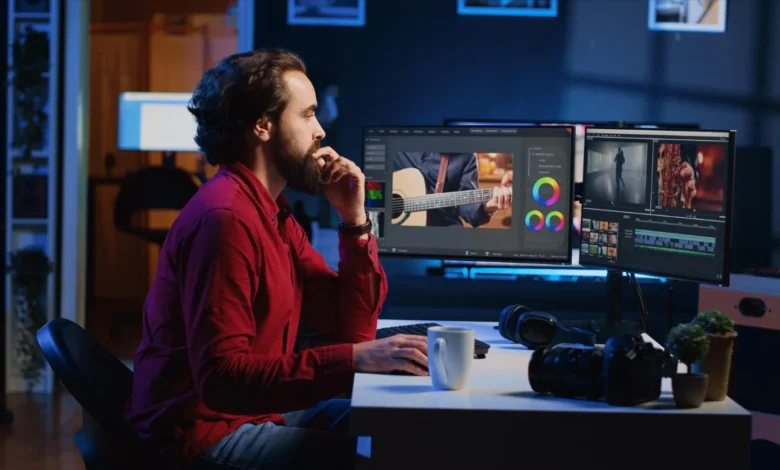Understanding SFM Compile – A Complete Guide for Source Filmmaker Users

Introduction: What Does “SFM Compile” Actually Mean?
SFM Compile If you’ve spent any time using Source Filmmaker (SFM), you’ve probably come across the term “SFM compile” more than once. For newcomers, it might sound like a programming jargon or a scary technical hurdle—but it’s really not as intimidating as it sounds. In fact, compiling is a fundamental part of the animation and rendering process in SFM.
SFM compile simply refers to the process of rendering your animation into a final video format. Whether you’re creating a short fan-made animation, a meme video, or a cinematic masterpiece using Valve’s beloved animation tool, understanding how to compile in SFM Compileis a key step in bringing your vision to life.
But there’s more to it than just hitting the “export” button. From choosing the right render settings to managing file sizes and frame rates, compiling in SFM Compile involves a series of choices that can significantly affect the quality and performance of your final video. In this article, we’ll break down everything you need to know about SFM compiling—from the basics to expert tips.
Getting Started: What Is Source Filmmaker and Why Is Compiling Important?

Before we dive deep into the compiling process, let’s talk a bit about what Source Filmmaker actually is. Developed by Valve, SFM Compileis a free 3D animation software that runs on the Source engine—the same engine behind iconic games like Team Fortress 2, Half-Life 2, and Left 4 Dead. SFM allows users to create animated videos using assets directly from these games.
Why Compiling Matters in Animation
The whole point of animating in SFM Compile is to eventually produce a video. Your final product needs to be rendered, or “compiled,” into a format like MP4, AVI, or image sequences. This step is necessary because the animation you build in SFM isn’t immediately usable outside the software.
You can think of the compiling process as baking a cake. All the modeling, animating, and lighting work you do in SFM is like mixing ingredients. Compiling is the act of baking it into something presentable—and shareable.
Real-Time vs. Compiled Playback
One major difference in SFM Compile is between real-time playback and compiled playback. Real-time preview lets you see what your animation looks like inside the SFM viewport. It’s fast and great for testing, but it’s not high quality. Compiled videos, on the other hand, use higher quality lighting, anti-aliasing, and effects to make the final output look polished and professional.
Where Users Often Get Confused
A lot of beginners run into confusion when it comes to compiling because it’s not as simple as pressing “save.” There are multiple render settings, export paths, codecs, and file types to consider. If you’re not familiar with these terms, the process can feel overwhelming—but don’t worry, we’ll explain each of them in the sections below.
Step-by-Step Breakdown: How to Compile in SFM
So, you’re ready to compile your animation. Compile Here’s a straightforward breakdown of the process so you can go from timeline to final video without pulling your hair out.
Step 1: Finalize Your Scene
Before you even think about rendering, make sure your scene is fully set up. That includes:
- Locking camera angles
- Finalizing lighting and shadows
- Completing all animations and motion data
- Setting the correct frame range in the timeline
Once your scene is locked in, it’s time to set up the export.
Step 2: Open the Export Menu
To access the compile options in SFM, go to the top menu bar and click on:
File > Export > Movie
This will bring up the “Export Movie” window where you’ll make some critical decisions.
Step 3: Choose Your Output Settings
Here’s what you’ll need to decide:
- Render Settings: This defines the visual quality.SFM Compile You can go for real-time (fast but low quality) or high-quality settings like “Poster” or “Progressive.” For the best visual output, Progressive is preferred.
- Output Format: You’ll choose whether you want to export as:
- AVI (common video format)
- TGA sequence (image sequence for high-end editing)
- PNG or JPEG sequence
- QuickTime MOV (requires proper codecs)
- AVI (common video format)
- Resolution and Frame Rate: 1080p at 30 fps is a standard option, but you can go higher if your system can handle it. SFM Compile Keep in mind, higher settings mean longer compile times.
- Anti-Aliasing and Motion Blur: These make your video look smoother and more cinematic but increase render time. They’re worth turning on for final renders.
After selecting your settings, click “Export Movie” and let SFM do its thing.
Common Issues in SFM Compile and How to Solve Them
Unfortunately, the compiling process in SFM doesn’t always go smoothly. It’s not uncommon to run into glitches, freezes, or unexpected output. Let’s explore some of the most common issues and how to troubleshoot them.
Problem 1: “Black Screen” Output
This is often due to missing or disabled lighting in your scene. SFM Compile Make sure your lights are active and that the scene camera is set correctly. Also, verify you’re not rendering from a blank camera.
Problem 2: Long Compile Times or Crashes
Rendering can be extremely CPU- and GPU-intensive. If you’re experiencing crashes, try reducing the resolution, disabling motion blur, or lowering anti-aliasing. You can also break your video into smaller chunks and compile in parts.
Problem 3: Poor Visual Quality After Compile
This usually happens when exporting with real-time settings. Always opt for high-quality rendering modes if you want a final product that looks professional. Also, avoid compressing too heavily—use lossless or high-bitrate settings if editing further in another software.
Advanced Tips for Professional SFM Compiling
Once you’ve gotten comfortable with the basics, you can start playing around with more advanced compiling tricks to really polish your final render.
Use Image Sequences for Best Quality
Rather than exporting directly to a video file, many professionals prefer exporting as a TGA or PNG image sequence. This allows for:
- Frame-by-frame editing
- No quality loss due to compression
- Greater control in post-production tools like Adobe Premiere or After Effects
After compiling as an image sequence, you can stitch it into a video using third-party editing software.
Batch Compiling for Large Projects
If you’re rendering multiple shots or scenes, it can be helpful to batch compile them overnight. Some users script this process using command-line tools or automate it through SFM sessions. While this is a bit more advanced, it can save you a lot of time.
Color Correction and LUTs
SFM’s rendering can sometimes look a bit flat. Once your video is compiled, consider color grading it using LUTs (Look-Up Tables) in a video editor. This gives your animation a cinematic touch and professional polish.
Final Thoughts: Mastering the SFM Compile Process
Compiling your animation in Source Filmmaker might seem complicated at first, but with a little patience and practice, it becomes second nature. The process is essential for turning all your hard work in the timeline into a polished video you can proudly share on YouTube, TikTok, or with the broader Source Filmmaker community.
To summarize:
- Understand your render settings and choose the right one for your needs
- Always test short segments before committing to full video compiles
- Consider exporting as image sequences for the highest quality
- Troubleshoot issues calmly—there’s usually a fix available
- Don’t forget to back up your session before rendering anything!
The more you compile, the more comfortable you’ll get with the process. And as your skills grow, so will the quality of your final outputs. So, go ahead—finish that animation, hit compile, and bring your digital creation to life!



